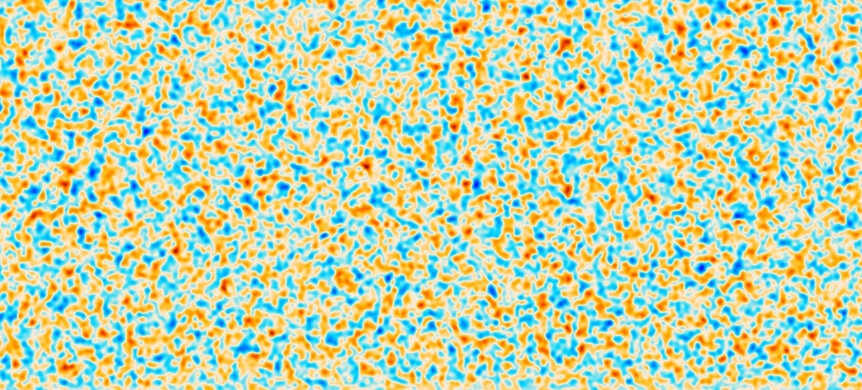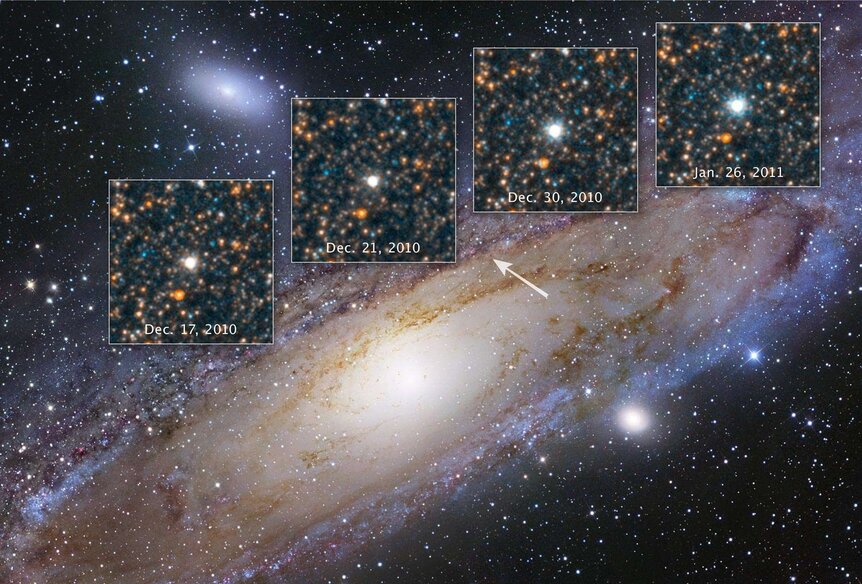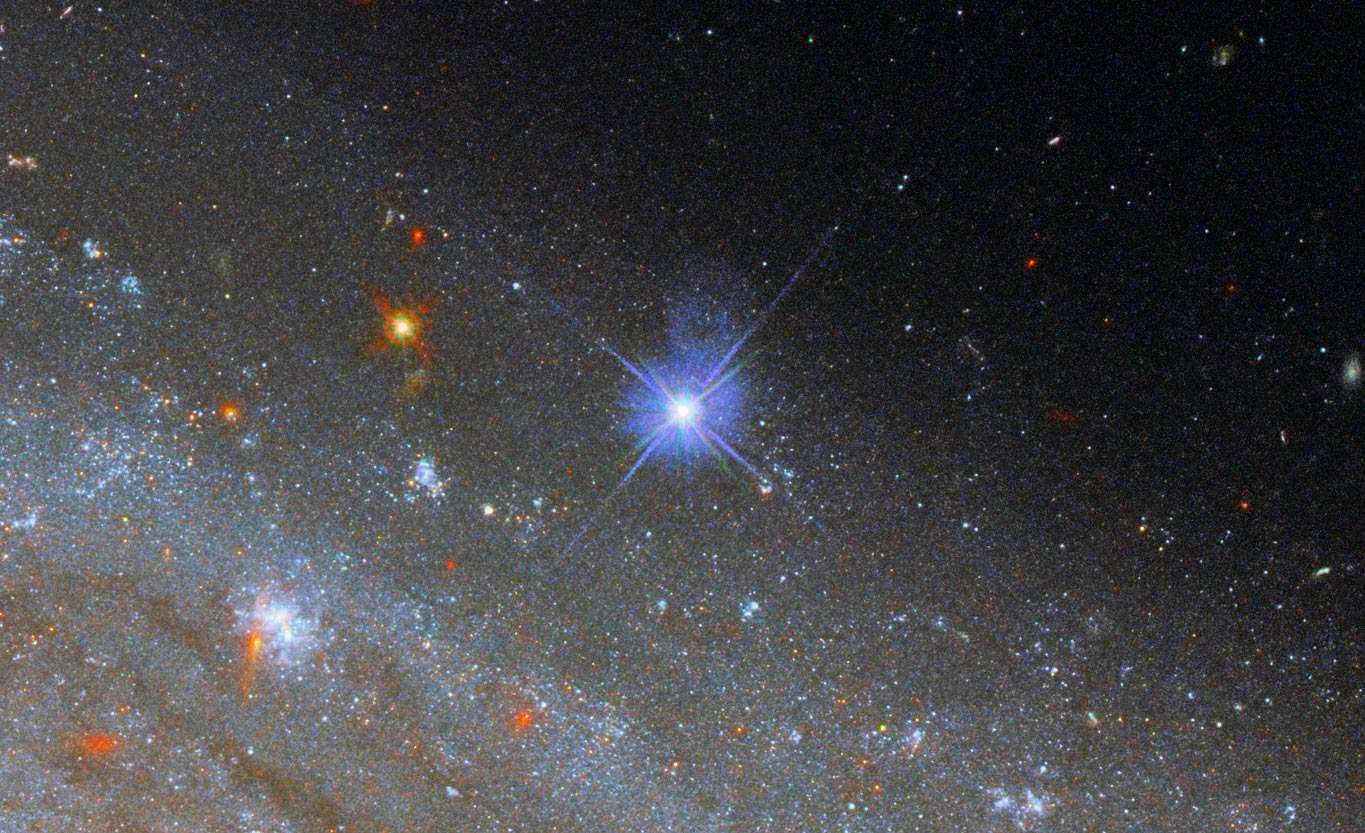Create a free profile to get unlimited access to exclusive videos, sweepstakes, and more!
Measuring the expansion of the Universe: Dying stars may be telling us we're doing it wrong.

How fast is the Universe expanding?
This is one of the most fundamental questions in cosmology (the study of the origin and behavior of the Universe), let alone science itself. We've known for a century that it's expanding; observations of distant galaxies show they are all moving away from us, which is what you'd expect to see if you're inside an expanding cosmos. As space itself expands it carries galaxies along with it, and the farther away they are the more rapidly they move*.
Thing is, when we look out into the real Universe, we get different numbers for this rate depending on how far out we look. Using things like exploding stars, which are good out to a couple of billion light years, we get one number, but looking at the background radiation of the Universe (created not long after the Big Bang, so more like 13.8 billion light years away) we get a different, slightly lower number.
The numbers are close, but statistically different. This has been a problem for a few years now — I have an overview and a lot of details in a post I wrote earlier in 2021. A lot of astronomers have been trying to figure out if either we're doing something wrong in our measurements or the Universe itself is doing something kooky.
Cosmologist Wendy Freedman is a leader in this field, and she thinks she sees a way out. If she's right, the fault lies in ourselves and not the stars.
The way this all works is that astronomers use what's called a distance ladder. We get the distance to nearby objects, then use them to get the distance to farther objects. Those are then used to get distances to even farther objects, and so on. For example, there is a type of variable star called a Cepheid that changes in brightness over time periodically, and the length of that cycle depends on how much energy the star emits (called its luminosity). This allows us to measure the distance to the star — the farther away a star is the fainter it is, so if you know its true brightness you can get the distance.
We see Cepheids in other galaxies, allowing us to measure those galaxies' distances. Then, if a specific kind of star explodes (called a Type Ia supernova) in one of those galaxies, we know how far away the exploding star is because we know how far the galaxy is from us. Once we know the distance and the brightness of the supernova, we can measure its distance.
The thing is, Type Ia supernovae all explode with more or less the same luminosity. Not exactly, but if we know how far away nearby ones are, we can figure out how to compensate for those small differences. Then, because supernovae are far brighter than Cepheids, we can use them to get distances to galaxies much farther away, billions of light years.
But, the Cepheid rung of the ladder isn't as well established as we'd like (I wrote about this just last week). There's some uncertainty in their distances, so we can only be so accurate in measuring the distances to the nearby supernovae.
Freedman published a paper reviewing various methods, including work her own team has done. In it she focuses on a method called the Tip of the Red Giant Branch (TRGB). When a star like the Sun runs out of hydrogen in its core it swells up into a red giant. The helium built up in the core from hydrogen fusion shrinks and heats up, and at some point will undergo an immensely energetic event called a helium flash (I know this all a bit complicated, so go read this article I wrote on it which explains it, or read my book Death From the Skies! where I go into a lot of detail).
As a red giant gets closer to the helium flash it gets more luminous and cooler. Here's the nifty bit: At the moment of the flash the star suddenly reverses course, getting warmer and fainter, and pretty much every red giant gets to the same luminosity when that happens. And they do get luminous, thousands of times brighter than the Sun, making them easy to see in other galaxies.
That makes them a great distance indicator! Like the other methods, we just need to see a bunch of red giants in a galaxy near the helium flash, measure how bright they are, and boom. We get their distance. This method has been around for a couple of decades and over time astronomers have refined it pretty well.
In her paper Freedman looks at recent updates to this method to get the better calibrated distances to nearby galaxies. From there she tightens up the measurements used to calibrate the distances to nearby Type Ia supernovae, and then bootstraps it to much more distant supernovae to measure the expansion rate of the Universe.
And this here is the very nifty bit: The number she gets for the expansion rate is slightly lower, and more closely matches the ones using the background radiation method. In other words, a distance method using nearby objects gets the same expansion rate as one using extremely distant objects.
If this holds up, it means the two methods may not be in tension at all, and it's just that our measurements of Cepheids are slightly off. Interestingly, a paper by different astronomers also recently came out saying the way we measure Cepheids is indeed off, and when done in a slightly different way, they too agree with the lower expansion rate.
I'll note this isn't the last word on all this. First, a lot of astronomers will be trying to replicate Freedman's results, and will also be working on honing the red giant method. Second, some scientists are still looking into seeing if the Universe is acting weirdly; a paper from a different team of astronomers also just came out investigating if the cosmic expansion rate has changed over time, and they find that fits many of the observations of both nearby and distant objects.
But it sounds like we're narrowing in on a solution to all this. I'll say that it seems more believable that our observation methods are off by a fraction versus the Universe expanding at different rates at different times, but hey, the Universe has surprised us before. Like, hundreds of times. This expansion rate issue is an ongoing one, and it'll be very interesting to see where it goes, whichever way it goes.
*Imagine a grenade going off, launching shrapnel in all directions. Wait two seconds, and take a photo. You'll see some stuff pretty far from the explosion, and other stuff closer in. The explosion happened at the same time for both, so stuff that moves faster gets farther away in those two seconds. So stuff farther away is moving faster. Same with the Universe.





























